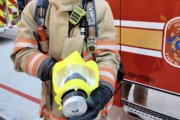Q: Do the apps that claim they can detect hidden cameras in a room work?
A: The cost and size of high-resolution cameras has gotten so small that they can be placed just about anywhere these days.
Traditional webcams are pretty easy to spot and often have an LED to indicate that they’re turned on, but cameras designed for covert surveillance are nearly impossible to see with the naked eye.
There are two primary ways to attempt to detect hidden cameras in a room: light and radio frequencies (RF).
Detecting through RF can be more accurate, but because so many things transmit RF signals it’s not something a casual users is likely to find useful, so light detection is best for most people.
The special lenses used in hidden cameras will reflect light, so they create tiny reflections that will generally stand out from the background.
There are a couple of apps on the market that claim to use your smartphone’s LED and camera to detect hidden cameras.
The Hidden Camera Detector app for iPhones costs $4.99, but the reviews from people who have bought it are not great.
Android users can try a free app called Glint Finder, which also has mixed reviews. I’ve tested it, and I’m not convinced it would be all that accurate in a real-world situation.
The problem with both of these apps is they require you to be fairly close to the hidden device (three to four feet), and the angle of your smartphone has to line up with the angle of the hidden camera lens in order to detect any reflections.
You’ll get better results with a specialty handheld detection device that uses a series of flashing red LEDs around a lens that you hold up to your eye.
They generate what are described as sparkling halos, or bright red dots, when they detect what appears to be a camera lens, so you can further investigate.
Just as with the apps, you need to move slowly and look very closely at each area that you’re examining, but they can do so from a much farther distance (10-15 feet). A dimly lit room also gave us the best detection results.
The devices we tested ranged from under $20 to over $300, and there wasn’t much difference in detection ability, so you don’t need to spend the big bucks.
They were all substantially better at detection than any of the apps and can be found all over Amazon (be sure to check the reviews).
Before you spend any money, we found that the DIY version of reflective detection worked just about as well: Grab a paper towel roll and a flashlight, hold the roll up to one eye and close the other.
In a darkened room, turn on the flashlight and place it at eye level next to the tube and slowly scan the room for the telltale white reflection.
We found every camera in our test room with this method, so give it a try at home yourself.
Ken Colburn is the founder and CEO of Data Doctors Computer Services. Ask any tech question on his Facebook page or on Twitter.







